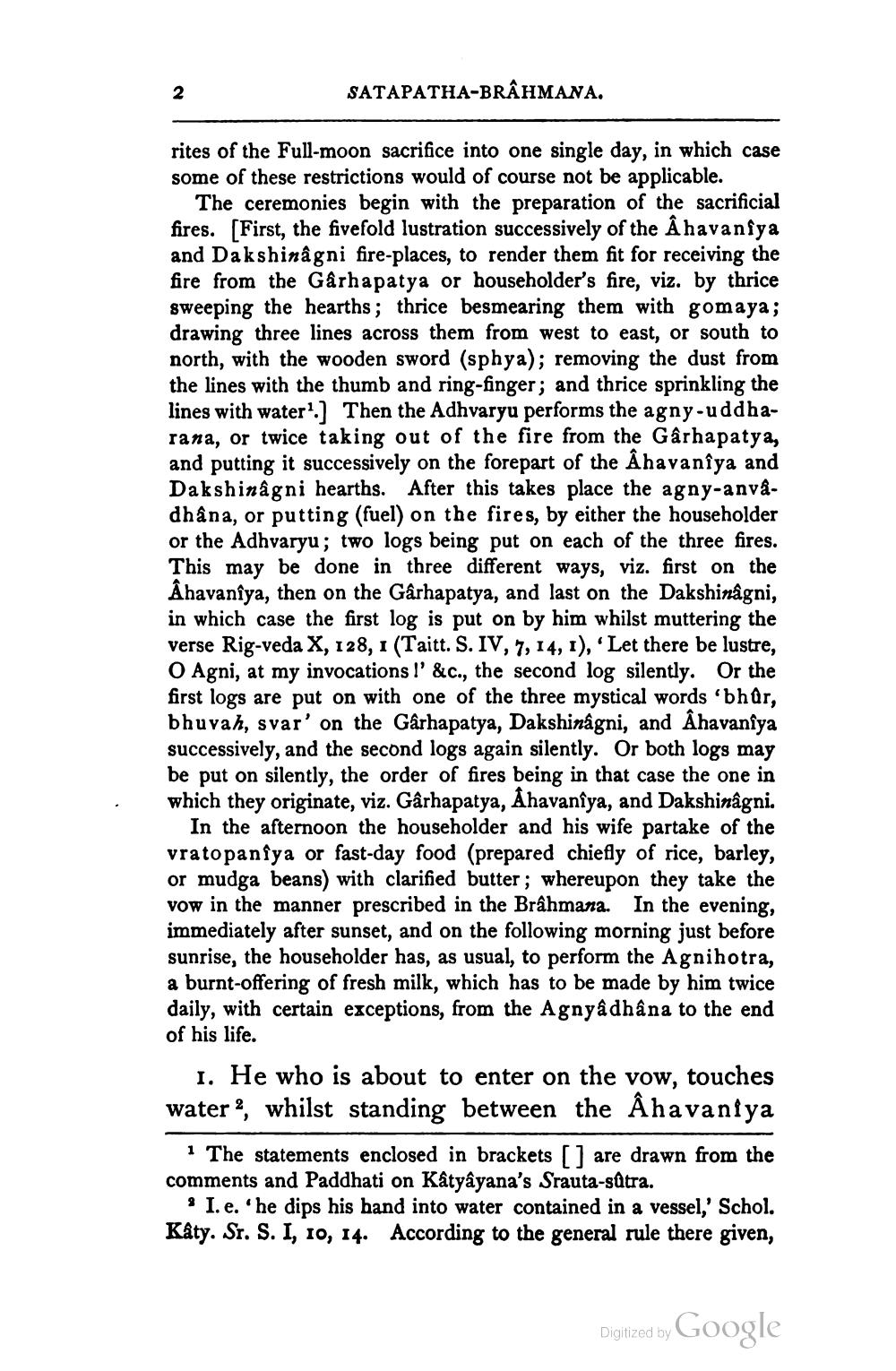________________
SATAPATHA-BRAHMANA.
rites of the Full-moon sacrifice into one single day, in which case some of these restrictions would of course not be applicable.
The ceremonies begin with the preparation of the sacrificial fires. [First, the fivefold lustration successively of the Åhavaniya and Dakshinagni fire-places, to render them fit for receiving the fire from the Garhapatya or householder's fire, viz. by thrice sweeping the hearths; thrice besmearing them with gomaya; drawing three lines across them from west to east, or south to north, with the wooden sword (sphya); removing the dust from the lines with the thumb and ring-finger; and thrice sprinkling the lines with water.] Then the Adhvaryu performs the agny-uddharana, or twice taking out of the fire from the Gârhapatya, and putting it successively on the forepart of the Ahavanîya and Dakshinagni hearths. After this takes place the agny-anvå. dhâna, or putting (fuel) on the fires, by either the householder or the Adhvaryu; two logs being put on each of the three fires. This may be done in three different ways, viz. first on the Åhavaniya, then on the Garhapatya, and last on the Dakshinagni, in which case the first log is put on by him whilst muttering the verse Rig-veda X, 128, 1 (Taitt. S. IV, 7, 14, 1), 'Let there be lustre, O Agni, at my invocations !' &c., the second log silently. Or the first logs are put on with one of the three mystical words 'bhar, bhuvah, svar' on the Garhapatya, Dakshinagni, and Ahavaniya successively, and the second logs again silently. Or both logs may be put on silently, the order of fires being in that case the one in which they originate, viz. Gârhapatya, Ahavaniya, and Dakshinagni.
In the afternoon the householder and his wife partake of the vratopaniya or fast-day food (prepared chiefly of rice, barley, or mudga beans) with clarified butter; whereupon they take the vow in the manner prescribed in the Brahmana. In the evening, immediately after sunset, and on the following morning just before sunrise, the householder has, as usual, to perform the Agnihotra, a burnt-offering of fresh milk, which has to be made by him twice daily, with certain exceptions, from the Agnyâdhâna to the end of his life.
1. He who is about to enter on the vow, touches water ?, whilst standing between the Ahavaniya
1 The statements enclosed in brackets [] are drawn from the comments and Paddhati on Katyâyana's Srauta-stra.
I.e. he dips his hand into water contained in a vessel,' Schol. Katy. Sr. S. I, 10, 14. According to the general rule there given,
Digitized by Google




